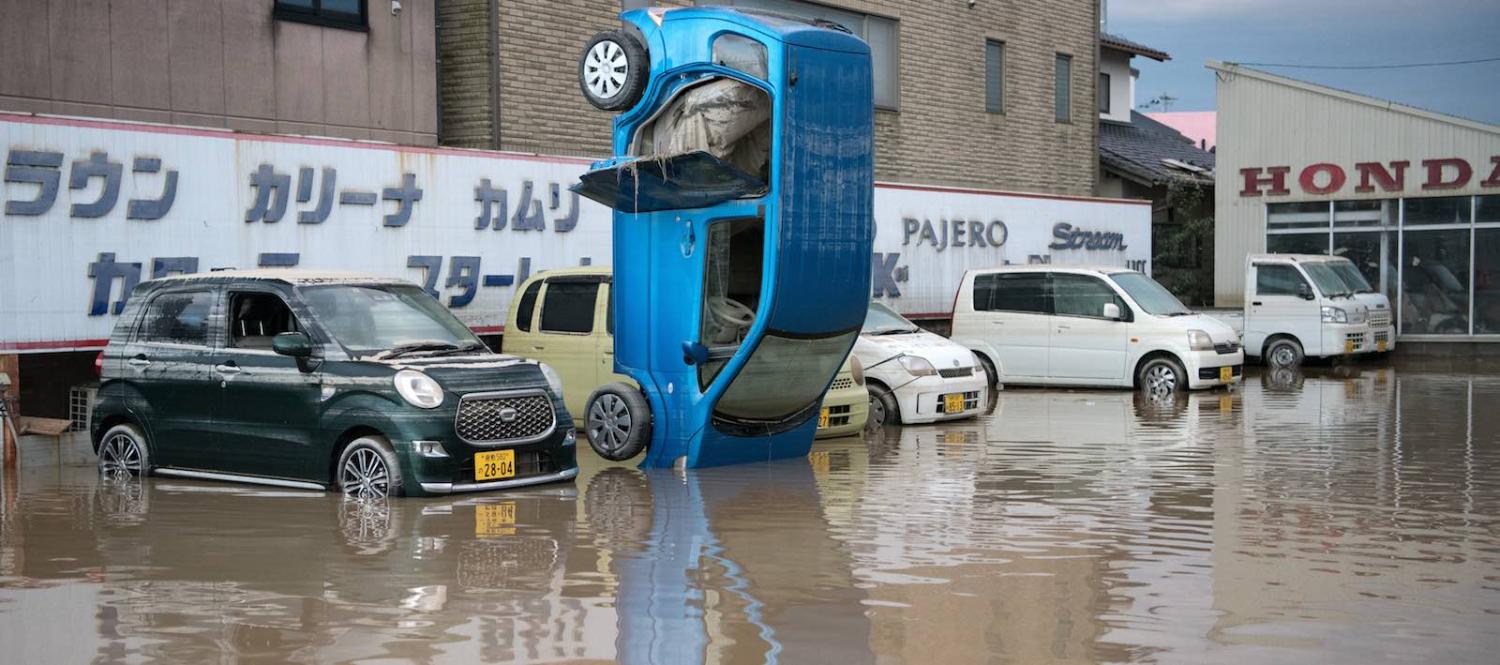The scenes in Japan in the wake of torrential rain that has caused landslides and widespread flooding are heartbreaking. The rains have been described as unprecedented, and the death toll has continued to rise as emergency workers and volunteers search for those who are still missing.
While some people have been able to return to their homes, many of the people who were ordered to evacuate remain displaced. Prime Minister Shinzo Abe’s government has committed millions of dollars to aid recovery.
The planet has already warmed. To continue to ignore or downplay this should no longer be acceptable.
Japan has experienced more than its fair share of disasters, including the devastating tsunami in 2011 that caused the meltdown at the Fukushima Daiichi Nuclear Power Plant. Scenes this week of flooded landscapes with the roofs of houses just visible above the water are eerily reminiscent of the horrific aftermath of the 2011 tsunami.
However, the recent rain and flooding have different lessons for us. Extreme weather events such as this are very likely to become increasingly common as a result of climate change and the continued warming of the planet. Heatwaves, bush fires, intense typhoons and cyclones, sea-level rise, flooding, and drought will all increase in both intensity and frequency unless we keep global warming below 1.5–2 degrees Celsius. Even if we keep global warming below 2 degrees we are still likely to face a significantly less stable or predictable climate than the one most of us grew up with.
In response to extreme heat and precipitation events across Asia, Europe, America, and the Middle East during June and July, the United Nations Framework Convention on Climate Change stated that:
Episodes of extreme heat and precipitation are increasing as a result of climate change. Although it is not possible to attribute the individual extreme events of June and July to climate change, they are compatible with the general long-term trend due to rising concentrations of greenhouse gases.
In the same week as the disaster in Japan, record hot temperatures were registered across California, with Disneyland soaring to 45 degrees Celsius on 12 July. In Australia, the state of New South Wales continued to be affected by one of the worst droughts in recent history. In Muscat, Oman, in June, the temperature didn’t drop below 42 degrees for more than 24 hours. Reports of record-breaking extremes and violent “once in a hundred year” storms are becoming commonplace.
We need to talk about climate change
In media coverage of all these events, climate change is only occasionally mentioned, and often just in passing. There is a reluctance to talk about climate change in the wake of tragedy, particularly when linking a specific weather event to climate change is complex. Establishing a direct causal link involves complex scientific modelling and analysis of data, with results that are often nuanced rather than clear-cut.
The conclusion is often that while floods and droughts have always occurred, climate change is making their occurrence more frequent. Yet the argument over whether or not this particular drought or that particular storm was directly and indisputably caused by the warming planet is counterproductive.
Instead, it is imperative that we shift the conversation away from a debate about climate change that all too often becomes politicised either though omission or oversimplification. We must focus on what these events can teach us about the kinds of climate-related risks we face in the near future, and how unprepared we are for them.
The tragedy in Japan should serve as a particularly alarming indicator of the kinds of challenges even the most disaster-prepared country faces. Japan has a highly developed disaster early-warning system, one that was utilised before the worst of the flooding and landslides caused so much devastation.
Early analysis suggests that a combination of urban development and land use in floodprone areas; human complacency in the face of evacuation orders, or an inability to evacuate safely; the sudden onset of torrential rains; and Japan’s unique geography interacted in such a way that the human toll has been unacceptably high.
The Center for Climate and Security recently released a report titled A Responsibility to Prepare. It argues that we face a future of unprecedented risks as a result of climate change. Yet we also possess a unique capacity to predict some of these risks and prepare to deal with them.
This will involve more than just early-warning systems or financial aid to rebuild after disasters. It will involve paying attention to the unanticipated consequences of climate change and the human and institutional factors that make resilience or adaptability possible. As researcher Joshua Busby has argued:
the disruption to the Earth’s climate will ultimately command more attention and resources and have a greater influence on the global economy and international relations than other forces visible in the world today.
Our first responsibility should be mitigation. The Paris Agreement must be upheld, and strengthened. Failure to radically cut global carbon emissions will mean disasters such as the one unfolding in Japan will become the new normal.
Our second responsibility is to learn from the past and present, and be prepared for a future in which extreme weather events will challenge even the wealthiest, most developed states, and will be devastating for the poorest and least developed. The global climate is changing, and the planet has already warmed. To continue to ignore or downplay this should no longer be acceptable.

